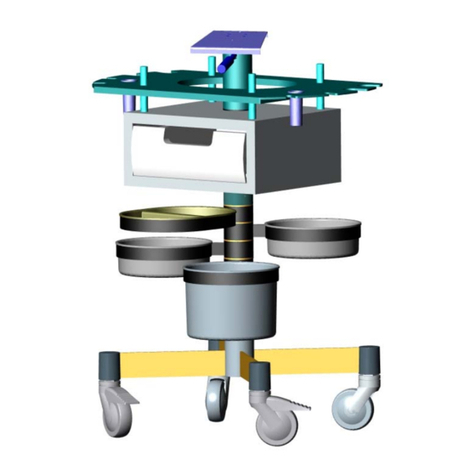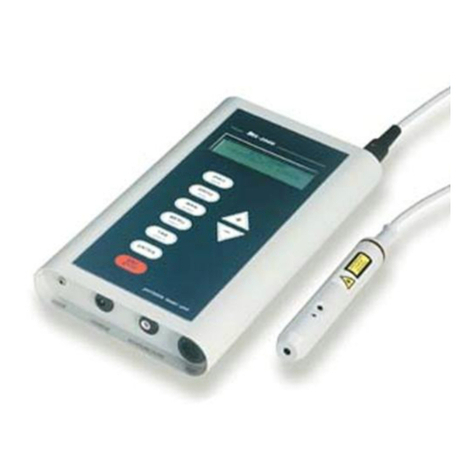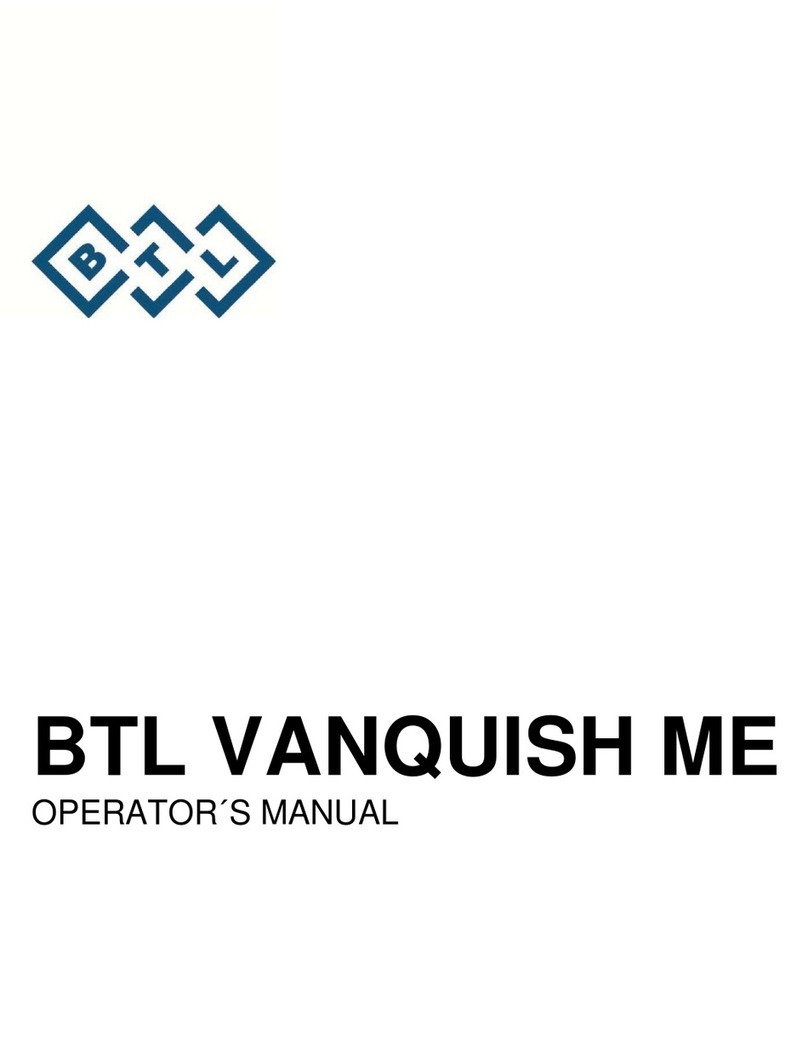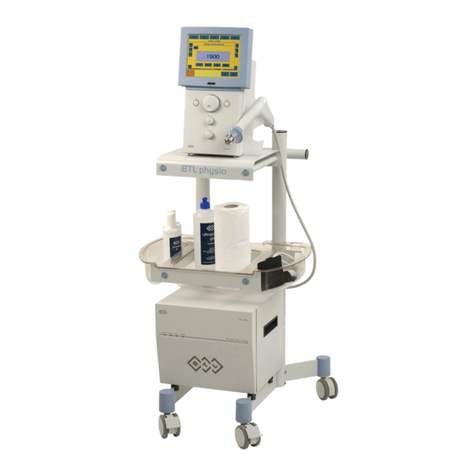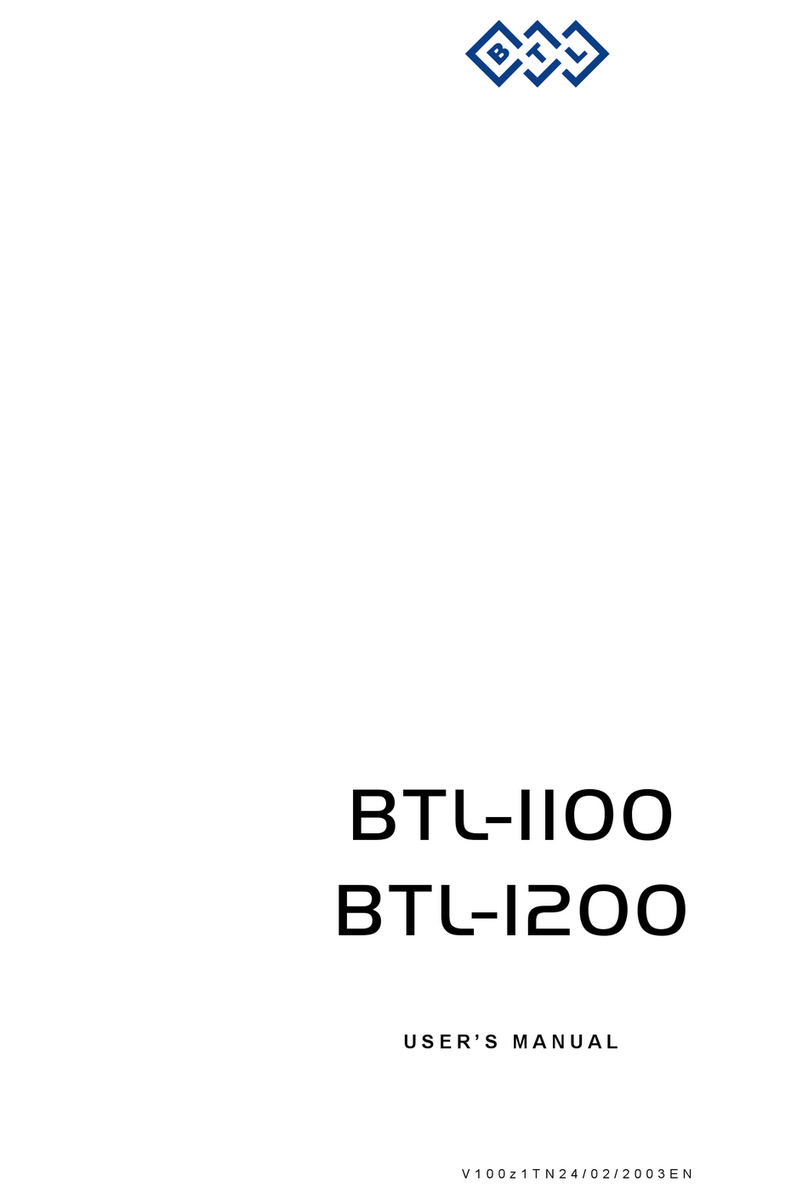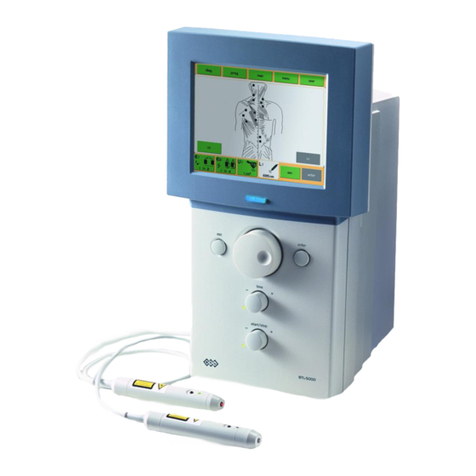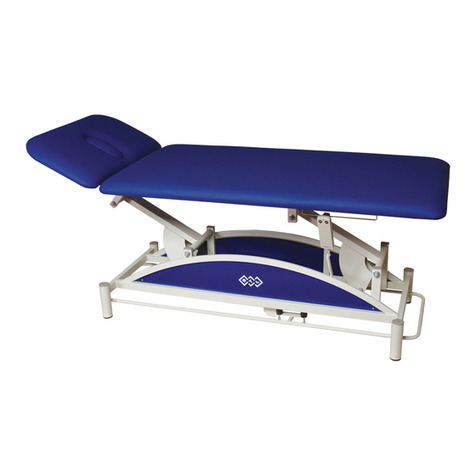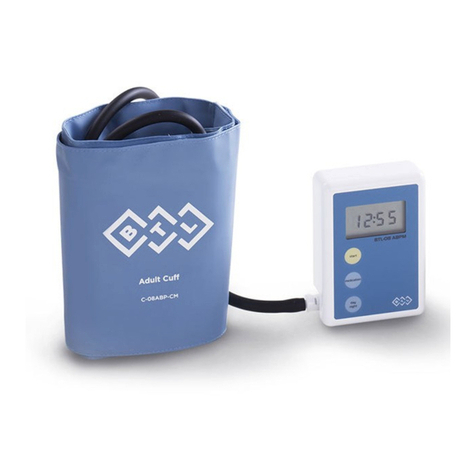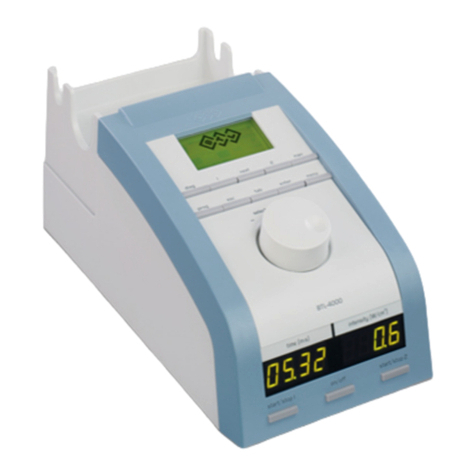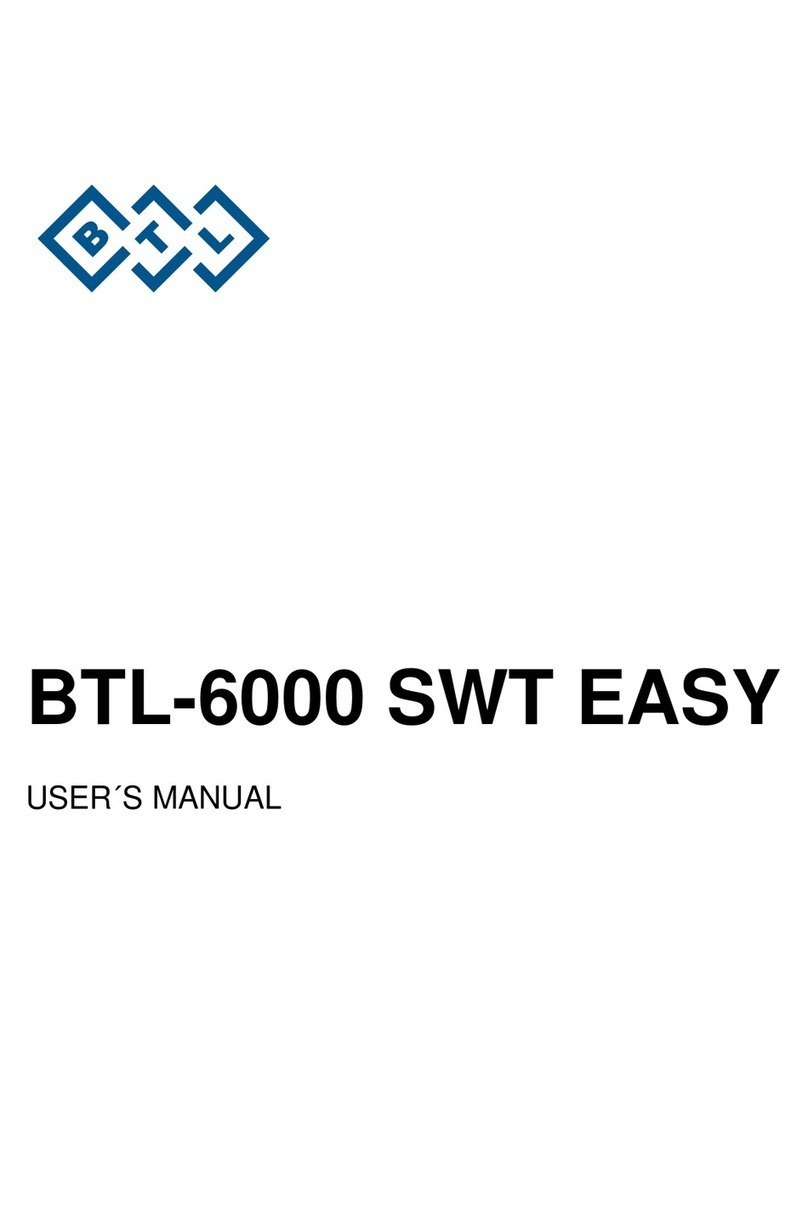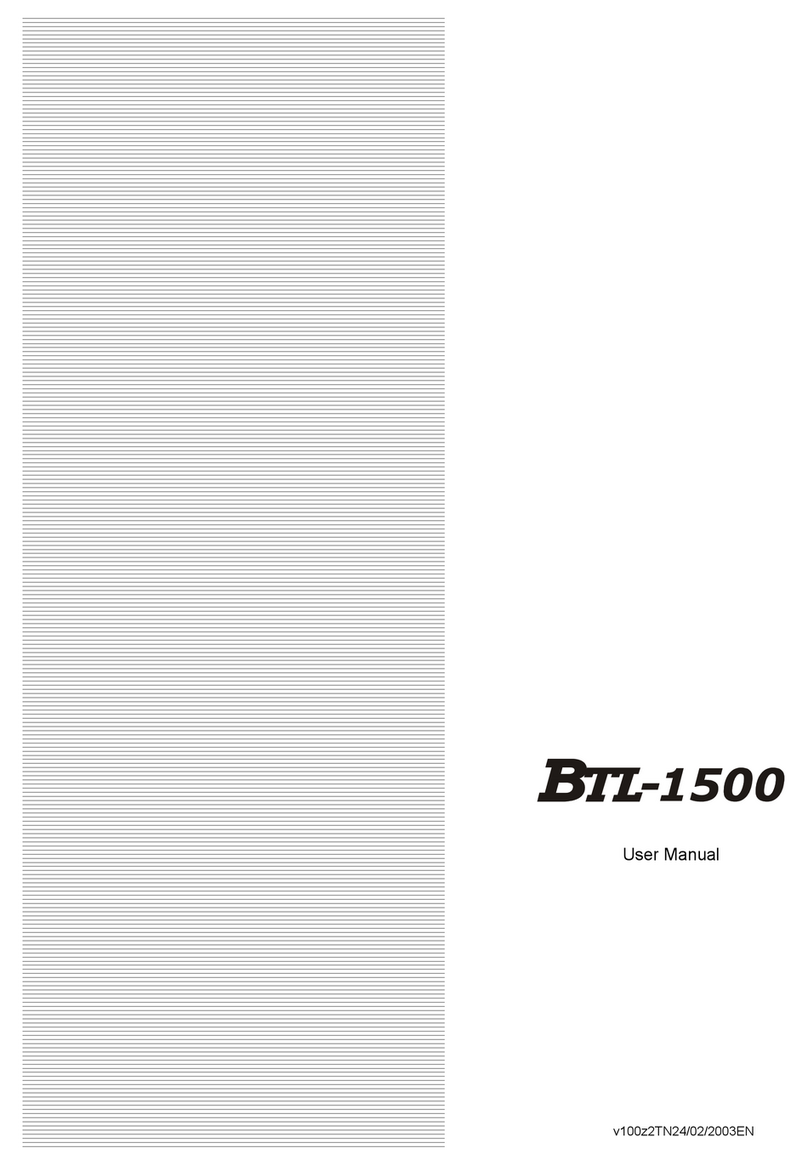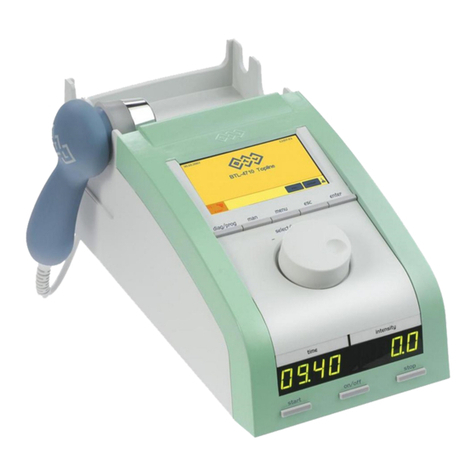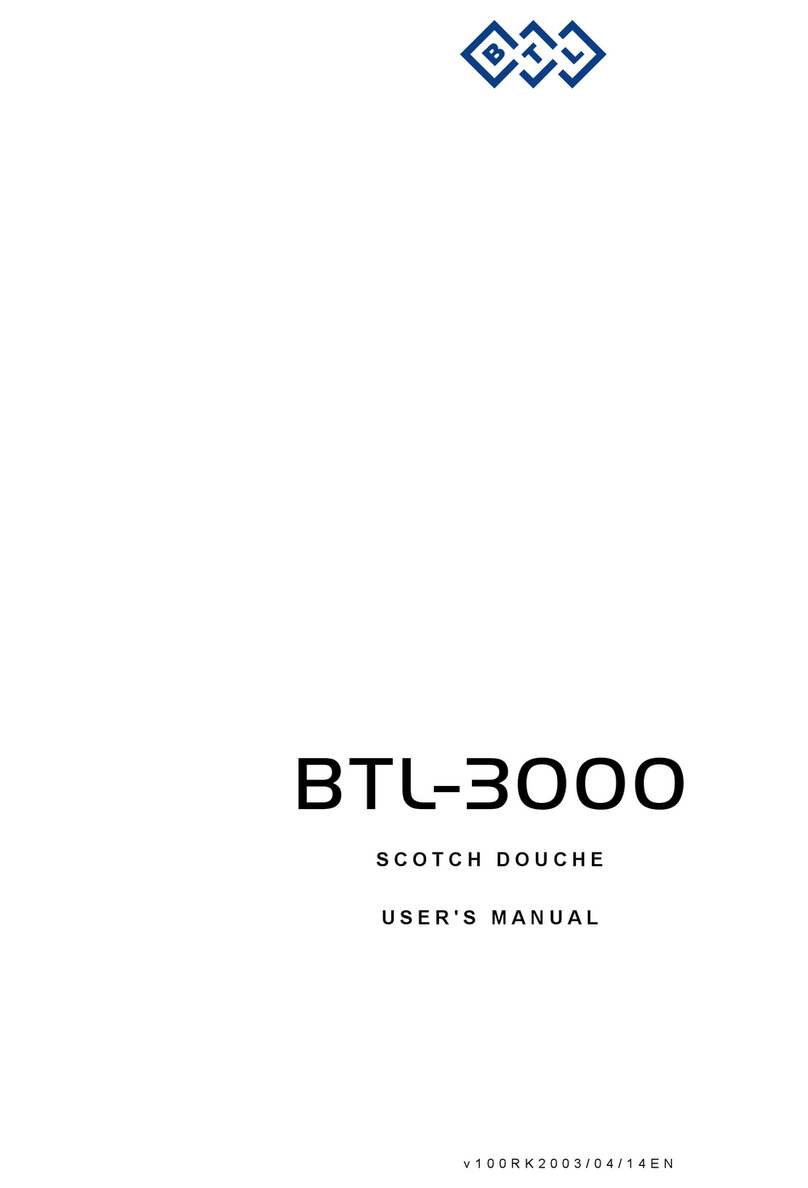
PAGE 3 OF 38
CONTENTS
1
GENERAL CHARACTERISTICS OF THE DEVICE...............................................................................................................5
1.1
BTL–6000 SWT Topline System Series..............................................................................................................................5
1.2
Shockwave and Its Character.............................................................................................................................................6
1.3
Shockwave Generation.......................................................................................................................................................6
1.3.1
Ballistic Principle of Shockwave Generation.....................................................................................................................6
1.4
Biological Effects of Shockwave Treatment........................................................................................................................7
1.5
Advantages of Shockwave Treatment ................................................................................................................................7
1.6
Possible side Effects of Shockwave Treatment...................................................................................................................7
1.7
Indications for Shockwave Treatment.................................................................................................................................8
1.8
Contra-indications for Shockwave Treatment......................................................................................................................8
2
INSTRUCTIONS FOR OPERATION......................................................................................................................................9
2.1
The Front Panel of the BTL-6000 SWT Topline..................................................................................................................9
2.2
Applicator for BTL-6000 SWT Topline ................................................................................................................................9
2.3
The Rear Panel of the BTL-6000 SWT Topline.................................................................................................................10
2.4
Assembly and Set-Up.......................................................................................................................................................11
2.5
Basic Displays and Operating of the Device .....................................................................................................................12
2.5.1
Initial Screen and Types of Tabs....................................................................................................................................12
2.5.2
Touch Screen.................................................................................................................................................................12
2.5.3
Numeric Keypad ............................................................................................................................................................13
2.6
Setting of Therapy............................................................................................................................................................13
2.6.1
Setting Therapy Parameters Via the ‘diag’ Button ..........................................................................................................13
2.6.2
Setting Therapy Parameters Via the 'prog' Button..........................................................................................................13
2.6.3
Setting Therapy Parameters Manually (User Setup) Via the ‘man' Button ......................................................................14
2.6.4
Setting the Number of Shocks........................................................................................................................................14
2.6.5
Setting Therapy Intensity................................................................................................................................................15
2.6.6
Therapy Parameters Screen – Ergonomic, Standard and Expert Mode..........................................................................16
2.7
Course of Therapy............................................................................................................................................................16
2.7.1
Start, Interruption and End of Therapy............................................................................................................................16
2.7.2
Running Therapy Screen ...............................................................................................................................................17
2.7.3
End of Therapy / Generation of Shocks..........................................................................................................................17
2.8
Application of Shockwaves...............................................................................................................................................17
2.9
Saving Therapy ................................................................................................................................................................19
2.10
User Settings: The ‘user’ Button.......................................................................................................................................19
2.10.1
Clients............................................................................................................................................................................20
2.10.2
User Diagnoses/Programs .............................................................................................................................................20
2.10.3
Recent Therapies...........................................................................................................................................................20
2.11
Unit Settings: The ‘menu’ Button ......................................................................................................................................20
2.11.1
Accessories....................................................................................................................................................................20
2.11.1.1
Installation..............................................................................................................................................................20
2.11.1.2
Information..............................................................................................................................................................21
2.11.2
Encyclopaedia................................................................................................................................................................21
2.11.3
Unit Settings...................................................................................................................................................................22
2.11.3.1
Password Setting....................................................................................................................................................22
2.11.3.2
Sound Setting.........................................................................................................................................................22
2.11.3.3
Screen Saver and Auto Switch-Off..........................................................................................................................22
2.11.3.4
Colour Setting.........................................................................................................................................................22
2.11.3.5
Setting of Display Contrast......................................................................................................................................23
2.11.3.6
Date and Time Setting............................................................................................................................................23
2.11.3.7
Language Setting....................................................................................................................................................23
